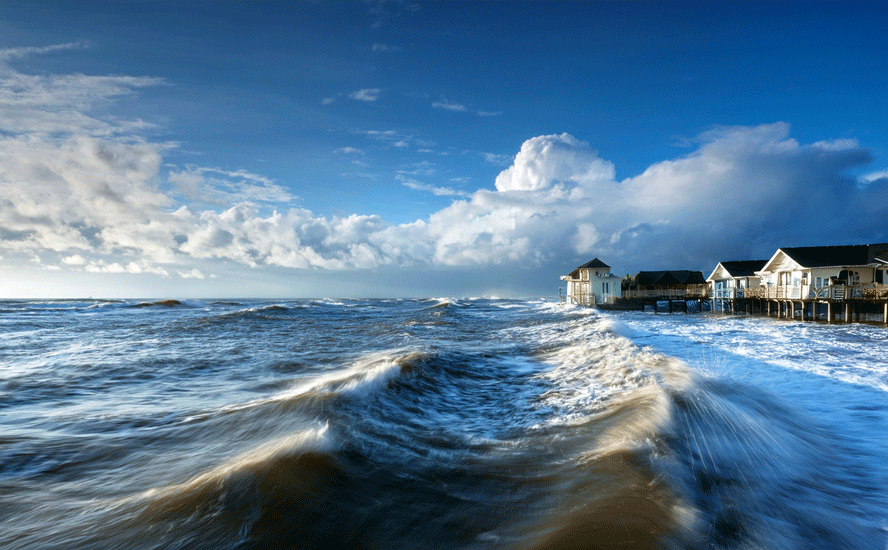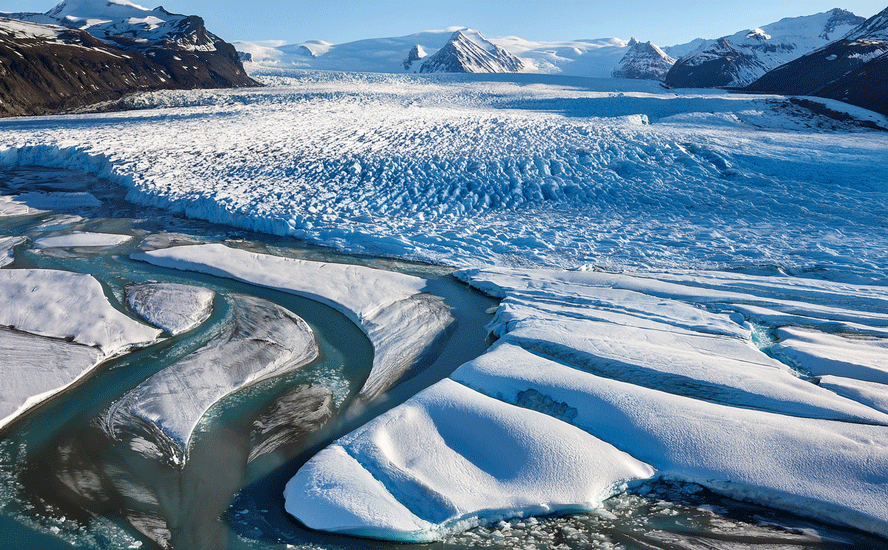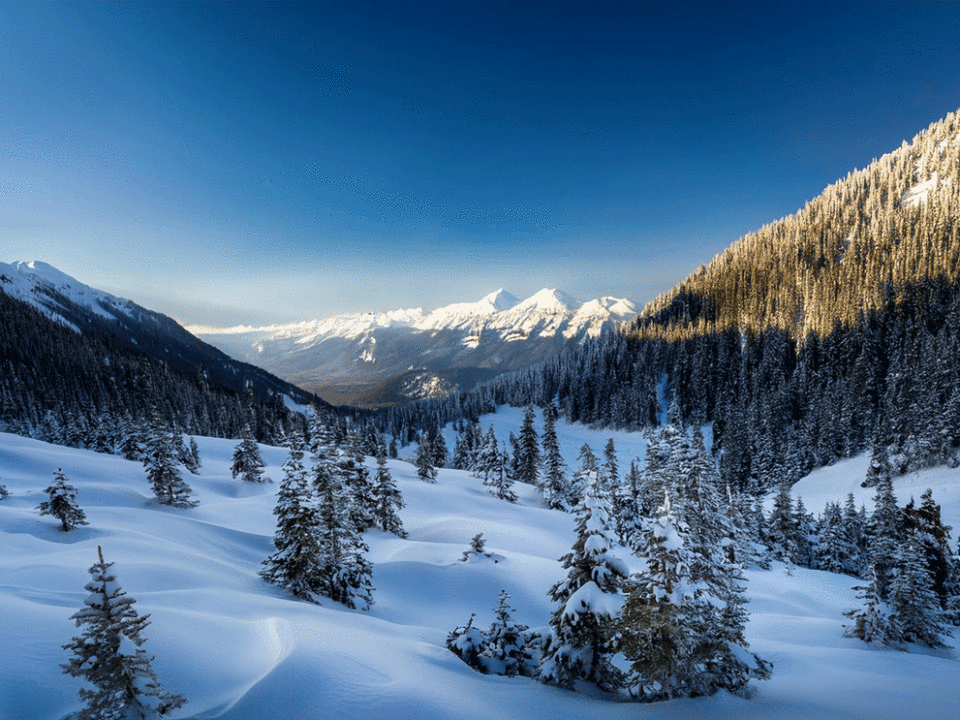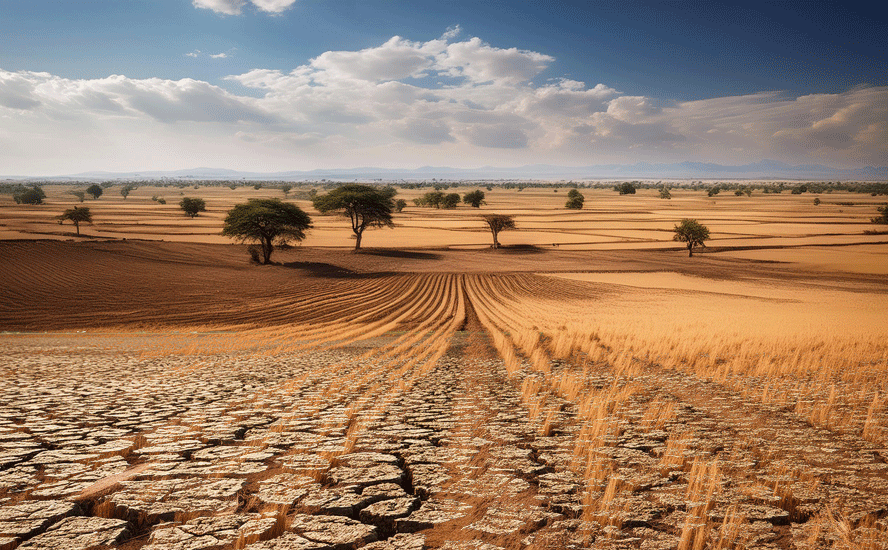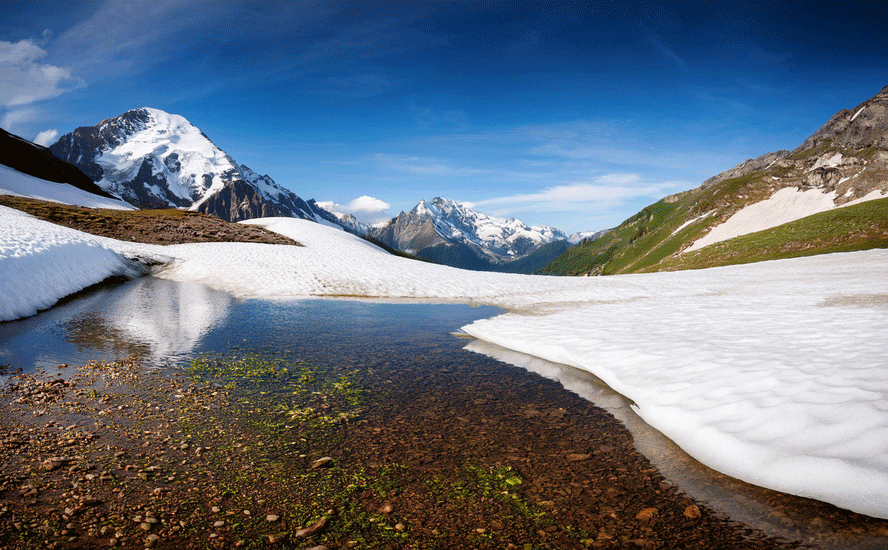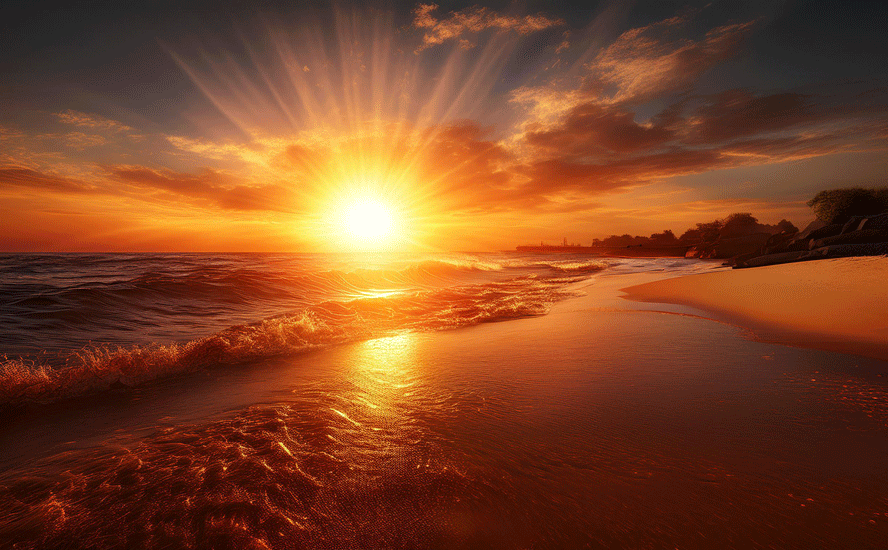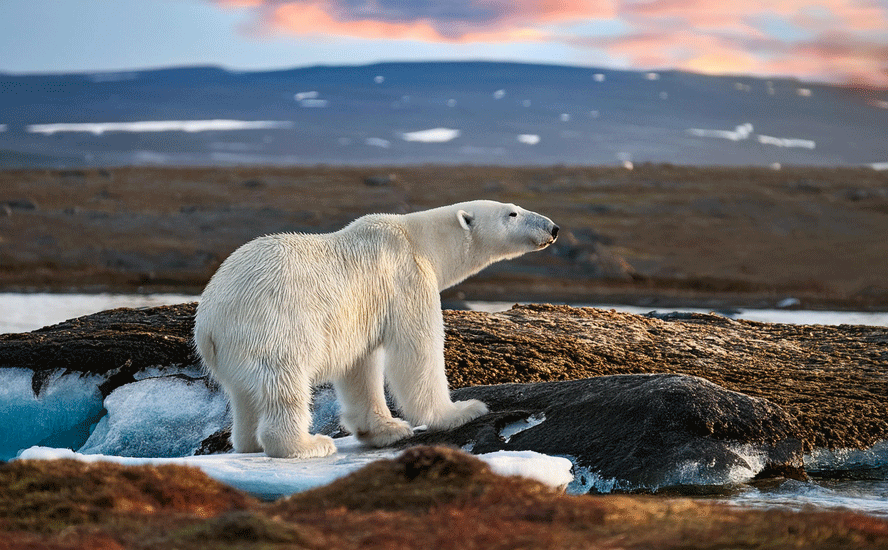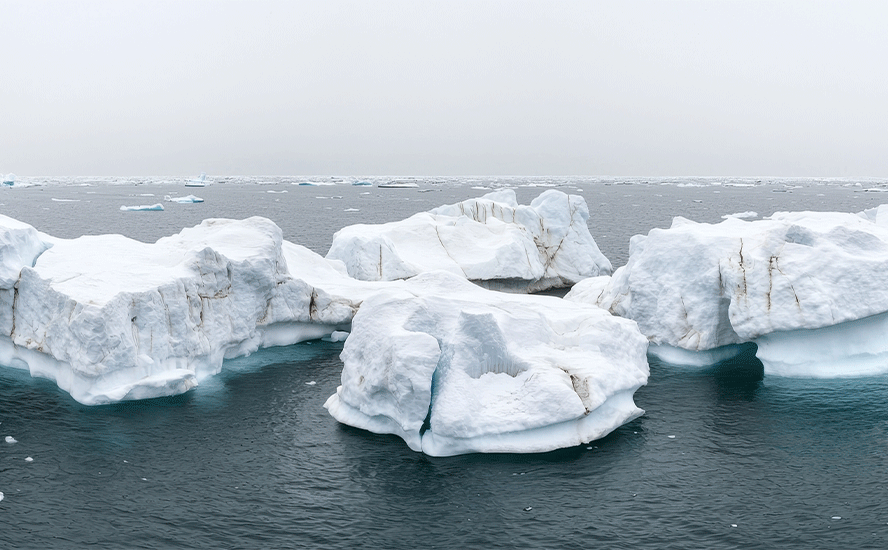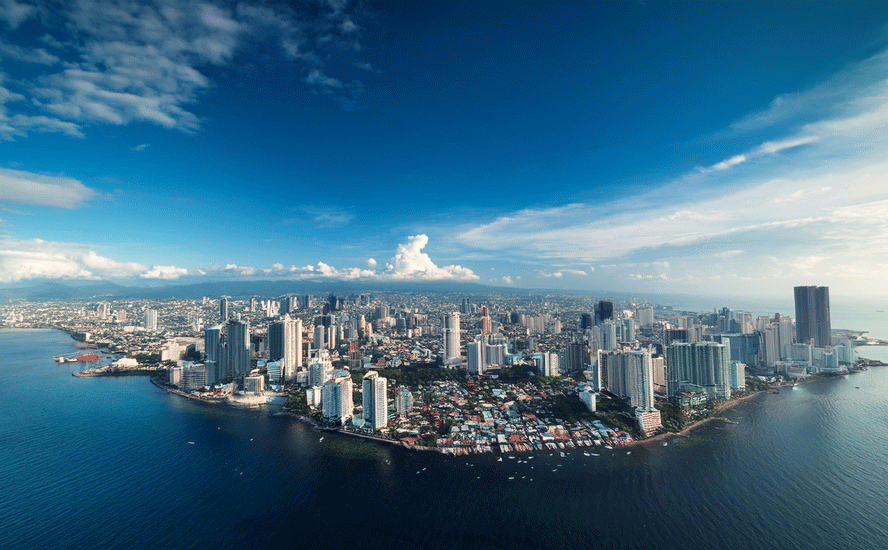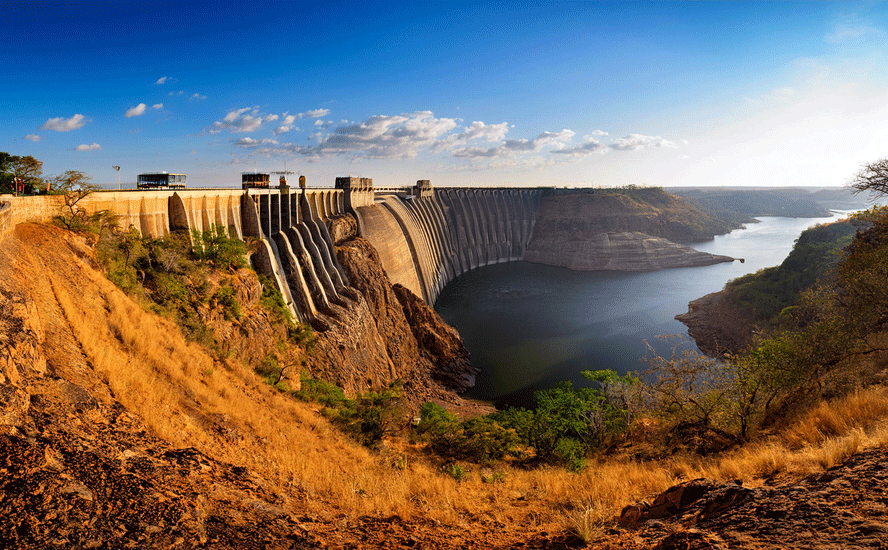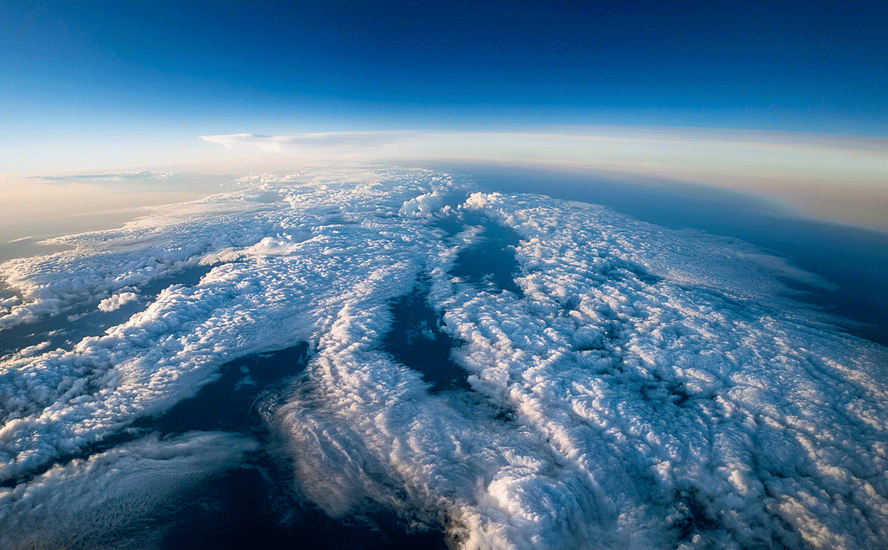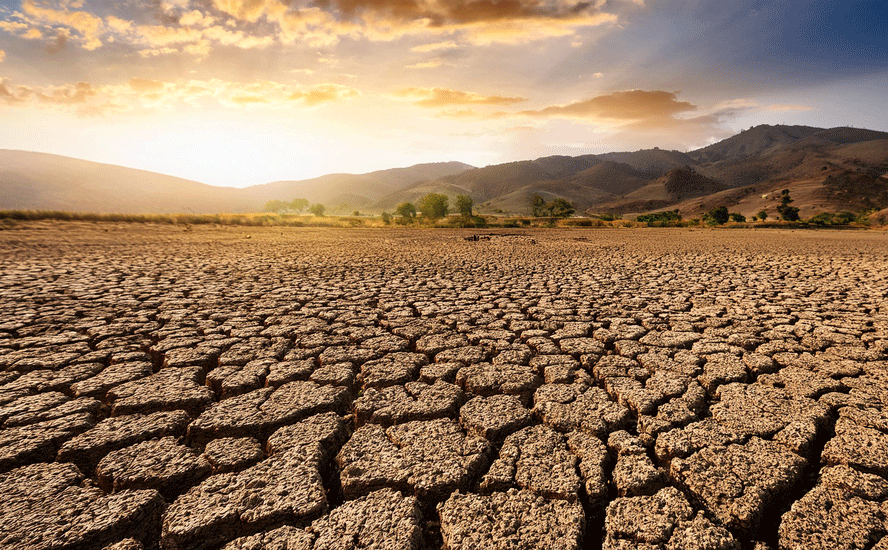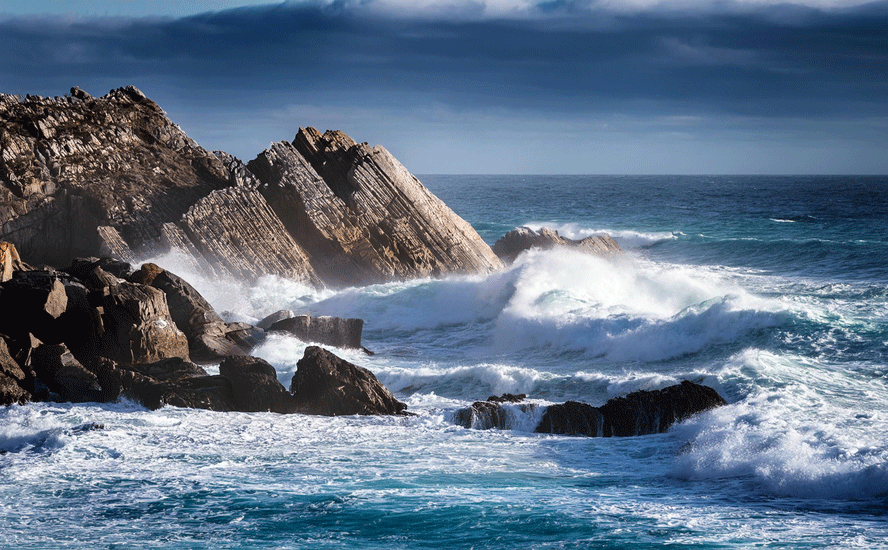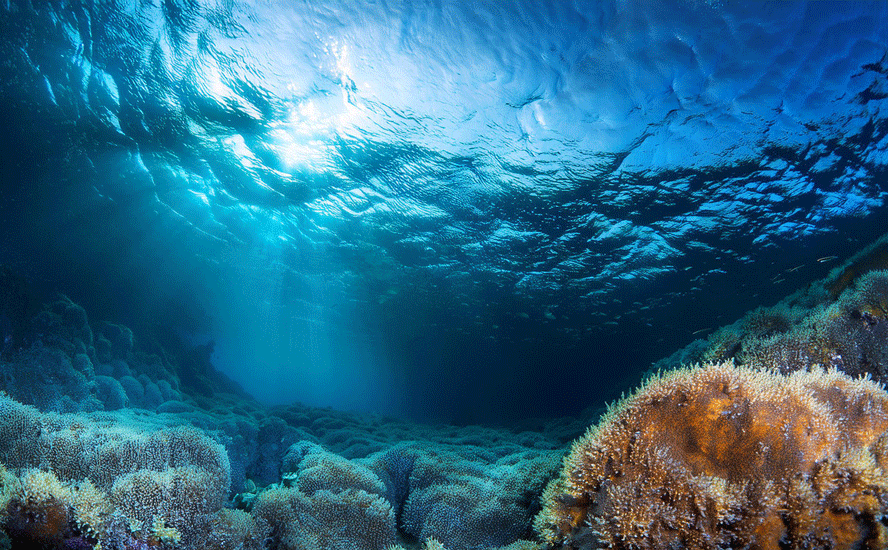A summer of extreme weather: Why global warming can’t be denied – Richard Mills
2023.08.24
Climate change, a misnomer, and the correct term, global warming, are cited as explanations for why our planet is in ecological flux. This includes freak winter storms that appear to contradict the “warming” thesis, scorching heat waves, prolonged droughts, water shortages, rising sea levels, retreating glaciers, thinning sea ice, melting permafrost, dying coral reefs and the extinction of species.
While there is disagreement over its causes — including these prominent climate deniers and 139 elected US officials who have made statements casting doubt on the science — the reality of global warming is an incontrovertible fact. The planet is warming, affecting our weather, oceans, growing seasons and food, as crops fail, causing shortages and price hikes. Storms are becoming more frequent and more intense. Droughts are lasting longer. Heat waves and forest fires are now annual summer occurrences.
In a previous article we identified six climate tipping points that we have already passed or are on the brink of passing. A tipping point is when we can no longer return to normal climate patterns and conditions will worsen.
In this article we summarize a summer of wicked weather, speculate what it could mean for humanity, and end with ways to protect ourselves and our wealth.
Something’s changed
At the risk of stating the obvious, Canadians have had a summer of extreme weather. Heat and drought are common in a country as large as Canada, but experts say what’s been happening isn’t normal.
Two-thirds into August, and at least another month to go before fall, we’ve had flooding in Nova Scotia (Halifax got three months of rain in 24 hours); wildfires in all 13 provinces and territories — tens of thousands of residents have been evacuated, hundreds of structures burnt and four firefighters killed; heat records toppled; and a dearth of precipitation leaving most of the country abnormally dry.
In fact it’s been the worst wildfire season in North America, with more than 13 million hectares burnt in Canada alone (Alabama is the US state closest in size). The fires have spread smoke containing dangerous-to-breathe particulate matter across North America and as far as Europe.
According to Danny Blair, co-director of the Prairie Climate Centre at the University of Winnipeg, “It’s not unusual for us to have dry weather or hot weather. But the frequency of it and the severity of it and the coinciding of it with enormous extremes of weather in the US and across the world is suggesting to a lot of people that something’s changed.”
The World Weather Attribution, which estimates the contribution of global warming to individual weather events, told one media outlet the US and European heat waves this summer would have been “virtually impossible” without it.
Western Canada fires
It was hard to believe the wildfire situation in British Columbia could get any worse. And then it did.
Late last week, a cold front swept into the southern half of the province, bringing high winds and dry lightning, creating new fires and growth on those fire crews were trying to contain.
In West Kelowna, the McDougall Creek fire grew an incredible 100 times larger in 24 hours, from 64 hectares to 6,800. Twenty-four hundred property owners were ordered to evacuate and nearly 5,000 were put on evacuation alert.
The next morning, an exhausted Fire Chief Jason Brolund said “It was 100 years’ worth of firefighting in one night.”
By Monday, officials estimated the wildfires burning around Kelowna —the McDougall Creek fire “jumped the lake” and started another fire in the McKinley Landing area — had destroyed almost 60 homes.
Many are comparing the Kelowna wildfires to the historic 2003 Okanagan Mountain Park fire, in which 239 homes were lost.
So many fires were burning in the province last Friday that the BC government declared a state of emergency. Between Aug. 18 and 19, the number of evacuations doubled to 35,000, with another 30,000 placed on evacuation alert.
As of Aug. 21, there were 374 active wildfires in BC, including 14 “wildfires of note” — fires that are highly visible or pose a threat to public safety. They are marked by a fire symbol on the map below.

Besides the Okanagan, the Shuswap is another badly hit region.
BC Wildfire Service director of operations Cliff Chapman called the Adams Lake fire complex “some of the worst conditions that this province has ever faced as it pertains to wildfires on the land base,” noting the fire ran over 20 kilometers in under 12 hours.
Eleven evacuation orders were issued affecting about 4,600 properties.
Thousands of people were ordered to evacuate their homes along Shuswap Lake Friday in what the regional district called its “most devastating wildfire day in history.”
“Today marks an unprecedented and profoundly challenging day for the Shuswap region,” said the Columbia Shuswap Regional District in a statement Friday evening, calling the situation “an unparalleled crisis.”

On July 18 it was reported that nearly 14,000 square kilometers of land in BC had burned since April 1, making 2023 the worst wildfire season on record, and that was before the latest fires.
Meanwhile in Yellowknife, Northwest Territories, the entire population of 20,000 has been evacuated due to a fire bearing down on the territorial capital. The army has been called in to help fight the blaze, with about 350 CAF personnel joining 600 firefighters in the field. Helicopters, air tankers and heavy equipment have been deployed.
Forest fires are also threatening the NWT towns of Hay River and Fort Smith. As of Monday evening, CTV News reported nearly 26,000 people had been forced from their homes, which is 68% of the population. News coverage showed a long line of cars queuing for kilometers to flee along the only road out of Yellowknife.
A total of 236 active wildfires remain burning across the territory.

While it’s normal and beneficial to the ecosystem for Canada’s boreal forests to burn, one fire expert told NPR this is well out of the ordinary.
“Some people are like, ‘Well, this is climate change. This is terrible. We’ve never seen this before.’ That’s wrong. We’ve seen this plenty of times. But it is [also] climate change, and it is much worse than we’ve seen before,” said Daniel Perrakis, a fire research scientist with the Canadian Forest Service in British Columbia.
Climate change makes large, destructive wildfires more likely because of hotter temperatures and drier vegetation. Higher average temperatures are increasing the length of the fire season, the amount of land burned, and the number of places where fires can occur. In recent years, fires have expanded in the Arctic and even in some rainforests.
Losing Lahaina
The fire situation south of the border is less dire, but still serious. According to the Fire, Weather & Avalanche Center, there are currently 462 wildfires burning in 16 US states. California has the most at 31, followed by Texas and Montana.
Of course, the most dramatic and destructive fire happened on Maui, the Hawaiian island popular with tourists especially those from BC.
At least 114 people are confirmed dead, and 850 are still missing in the aftermath of a massive wildfire that leveled Lahaina, an historical whaling village turned tourist mecca.
While the cause of the fire is not yet known, emergency officials quoted by NBC News said it was exacerbated by strong easterly trade winds whipped up by Hurricane Dora, which passed 400 miles south of Hawaii. A pyro geographer at the University of California said it was the strong winds interacting with Maui’s mountainous topography that created such volatile conditions in the seaside town.
Also, like in most forest fires, the underlying vegetation was extremely dry. An Aug. 19 Globe and Mail story explains how forests once covered the dry parts of the Hawaiian islands, but they were cleared to grow pineapple and sugarcane. Plantation managers ensured the land was tended and irrigated, but the closing of the state’s plantations left large tracts of neglected land. Rather than the native forest coming back, non-native grasses took over that are extremely flammable
As for global warming’s role in the Maui fires, one expert quoted by NBC News calls it a “threat multiplier”:
For instance, warmer-than-usual oceans can fuel the formation of bigger and stronger hurricanes. Higher temperatures from global warming also make droughts more frequent and intense, and dry vegetation, including non-native grasses and shrubs, burn quickly and provide dangerous fuel for wildfires.
“And then on top of that — the icing on the cake or the straw on the camel’s back, so to speak — you have climate change. It’s a threat multiplier, an exacerbator, an amplifier.”
If the fires weren’t enough to destroy the spirits of Hawaiians, the National Weather Service forecasted that much of Maui will see heavy rain from tropical cyclone Fernanda this week. Residents are being warned that landscapes severely impacted by wildfires are now at risk of flooding.
California’s natural disaster trifecta
Speaking of multiple threats, the earthquake and fire-prone state of California has been in the headlines lately for a natural disaster “trifecta”. Over the weekend, tropical storm Hilary unleashed torrential rains and flooding across southern California, at the same time as an earthquake struck near Ojai, both of which happened during what has historically been the state’s wildfire season.
Cal Matters reports On Sunday afternoon, the tropical storm made landfall in the northern Baja California peninsula, with wind speeds over 60 miles per hour as it barreled northward across Southern California’s coastal cities and pushed inland, swamping parts of the desert in knee-deep flood waters.
On Monday CNN said 16 million people from southern California north to Idaho were under flood watches. Schools were closed, flights canceled, and evacuation orders issued for some communities. A dozen people at a senior care facility in Cathedral City were trapped by a mud and sand debris flow and had to be rescued. Last Saturday Death Valley set a wettest-day record with 1.68 inches of rain, while in Palm Springs, extreme flooding closed roads and downed 911 lines. Last Sunday was San Diego’s rainiest summer day on record.
A cyclone in the Pacific Ocean is extremely rare. The governor’s office described it as the “wettest tropical cyclone in state history” and the first such storm to hit southern California in 84 years. The Los Angeles Times explained that “an unusual set of weather patterns” and warm ocean waters enabled the tropical storm to take shape.
The CBC quoted an Environment Canada senior climatologist saying the waters off all three Canadian coasts have never been warmer, with Hudson Bay hotter by 3 degrees, the Pacific coast showing an increase of between 2 and 4 C, and the Atlantic and Arctic coasts up 5 C from average.
Just after Hilary made landfall, a 5.1 magnitude earthquake struck the Ventura County community of Ojai. Though there were no initial reports of damages or injuries, shaking was felt throughout Los Angeles and surrounding communities.
On Saturday the 3,000-acre Deep Fire forced residents and resort-goers to evacuate in Trinity County, and the National Weather Service issued a warning in Eureka for elevated fire weather conditions caused by lightning strikes, Cal Matters said.

Heat, drought, famine
Of course, the wildfires destroying hundreds of square kilometers of forest and endangering the lives and properties of so many Canadians and Americans, are the product of hot weather and droughts, which create the perfect conditions for fires, either human- or lightning-caused. A lack of rain and high winds often pile on, hampering efforts to contain the fires and facilitating their spread.
This year, the area of extreme drought has shifted from the western United States, which saw heavy winter snows alleviate the water crisis, to the Midwest. This is especially worrying because states like Nebraska, Kansas, Missouri, Iowa, Indiana and Ohio, constitute America’s breadbasket.
USA Today quotes experts who say the current lack of rain is compounding existing problems with dry soils and streams, potentially raising the cost of cattle feed and, further up the food chain, the price Americans pay for beef.
According to U.S. Drought Monitor, continued hot and dry weather last week meant deteriorating drought conditions across the Rio Grande Valley, Texas, and the lower Mississippi Valley. The normal summer monsoon remains suppressed, with increasing short-term drought across Arizona, New Mexico and southwest Colorado.
Red areas are extreme drought, brown areas show exceptional drought.

Note that California and Nevada, normally among the driest states, are this year shown as mostly white. According to Statista, tropical storm Hilary dumped enough rain on California to make it free of extreme drought conditions for the first time in three years. While only 3% of the continental United States was classified by U.S. Drought Monitor as under extreme or exceptional drought, as of Aug. 15, compared to 20% in May 2022, drought is still affecting half of the lower 48 states.

The July 2023 Drought Report said nearly a quarter (22%) of the contiguous US fell in the moderate to extreme drought categories at the end of July.
The Guardian reported sweltering temperatures Saturday across a large swath of the central United States, from the Gulf of Mexico almost to the Great Lakes — including Dallas-Fort Worth, Texas, where the mercury reached 42.2 degrees Celsius or 108 F.
On Sunday the National Weather Service issued an excessive heat warning for parts of nine states, with heat advisories or watches put in place for sections of another eight states.
Canada, meanwhile, is showing a similar drought pattern. Agriculture Canada’s July 31 drought map shows 59% of the country was classified as moderate to exceptional drought (D1 to D4 on the map below), including 67% of farmland.

In BC, 28 of 34 river basins were at the province’s top two drought levels, as of Aug. 4.

From May through July, CBC News said Kelowna experienced 36 days of weather more than 30 C. The normal count is 16. Norman Wells, not far from the Arctic Circle in the Northwest Territories, set a new record of 38 C on July 8.
Of course, the heat that has blanketed much of North America has extended beyond the continent. In southern Europe, soaring temperatures in July had one expert comparing the hot air pushed in from Africa and settling over the Mediterranean to a giant pizza oven.
On the Greek island of Rhodes, 11 days of wildfires forced the evacuation of thousands of people at the height of the tourist season.
Food production is particularly vulnerable to the adverse effects of global warming; its impact on food supply and prices over a longer horizon cannot be understated. Global warming is influencing weather patterns, causing heat waves, heavy rainfall and droughts, making it difficult to grow crops in many parts of the world year after year.
According to the World Bank, about 80% of the global population most at risk from warming-related crop failures and hunger are in Sub-Saharan Africa, South Asia and Southeast Asia, where farming families are disproportionately poor and vulnerable. A severe drought caused by naturally occurring weather patterns or climate change can push millions more people into poverty.
An article posted by The State Department notes that climate change amplifies the impacts of La Nina in the Pacific Ocean. This is because changes in ocean temperatures affect tropical rainfall patterns. It quotes the World Food Program (WFP) saying that recurrent La Nina conditions since 2020 are causing crop and livestock losses particularly in East and West Africa, Central Asia, Central America and the Caribbean.
Africa is expected to be particularly hard hit by extreme weather due to average temperatures rising faster than elsewhere; rainfall increasing by 30% in wet regions and decreasing 20% in dry regions; and the fact that 95% of African farmers rely on rainfall for irrigation.
Other interesting facts about Africa:
- Before 1999, a poor rainy season in Africa occurred every five or six years. Today, farmers grapple with lack of rain every two or three years, according to the International Livestock Research Institute.
- Across Africa, agricultural productivity has declined by 34% due to climate change, more than in any other region, the UN says.
- The Horn of Africa has been particularly affected. Lack of rain in Ethiopia, Kenya and Somalia is the worst in the last 70 years. Four consecutive rainy seasons have failed, and the next season is expected to fail too. Almost half of Somalia’s population is considered food insecure.
- Elsewhere in Africa, Madagascar’s Grand Sud area, the nation’s far southern provinces, in 2022 recorded its worst drought since 1981 and three consecutive years of poor harvests, WFP says.
It’s not only lack of rain and extreme heat that kills livestock and damages crops, so does too much rain. A few examples:
- Pakistan was hit with catastrophic monsoon floods at the end of August, 2022, affecting 33 million people.
- South Sudan last year faced a fourth consecutive year of flooding.
- Nigeria in 2021 experienced a delay in rainfall, which reduced its harvest by over 65%. When the rains did come, the resulting floods wiped out what was left.
Gustavo Naumann from the International Center on Environmental Monitoring pointed out the interconnection between local market conditions and globally, particularly for crops grown in so-called breadbaskets like South America, central US, Ukraine, India and China.
When a drought hits one or more of these areas, there is less supply of staple crops in the global market, which pushes prices up.
Scientists, say the Wall Street Journal, forecast there will be an uptick in the frequency and severity of droughts, as temperatures continue to rise. That means economies are going to have to brace themselves as droughts can threaten global food security.
So far in 2023, those predictions seem to be right on the money.
Take what’s happening in Kansas as a harbinger. The state normally produces far more wheat than any other state, but Kansas wheat farmers will reportedly reap their smallest harvest in more than 60 years, the result of a two-year drought that has withered the crop. This is concurrent with what are the worst growing conditions in the US in more than three decades.
Things are so bad, flour mills will likely have to buy wheat grown in eastern Europe.
The Department of Agriculture forecasts that durum wheat output will fall 16% this year, with other spring varieties down 1%.
In the farming and ranching belts of Alberta, extremely dry conditions are prompting conversations about food security, with at least six municipalities and the Special Areas Board declaring agricultural disasters.
The Special Areas Board covers more than 5 million acres in east-central Alberta.
“Dry conditions are not new to the Special Areas, but ongoing moisture deficiencies and hot temperatures have devastated crops and pasture throughout the region,” wrote Jordon Christianson, chair of the board, in a statement, via CBC News.

Cattle ranchers are also struggling to find enough water, grass and feed. As in previous years, when extreme drought led beef producers in Canada to thin their herds, the same thing is taking place this year, CBC quoted Brodie Haugan, chair of Alberta Beef Producers.

Transport issues are further compounding food security concerns. Water levels on the Mississippi and Ohio rivers have fallen for a second straight year, raising the prospect of shipping problems on crucial freight routes.
“I would be surprised if global food prices do not start increasing again after over a year of decreasing,” Caitlin Welsh, a food expert at the Center for Strategic and International Studies in Washington, told Bloomberg. “We’re experiencing multiple threats to agriculture markets.”
Heat and drought are also affecting huge swaths of other continents.
Right now, it’s so hot in southern Europe that cows are producing less milk and tomatoes are being ruined. Grain harvests will be much smaller too after struggling with drought.
Droughts have meant that grains production in Italy, Spain and Portugal will be as much as 60% lower than last year, contributing to possibly the EU’s worst grain harvest in 15 years, according to farm lobby Copa and Cogeca.
While the full extent of the damage will depend on how long the unfavorable conditions persist, there are already clear signs of destruction in fruit and vegetables in southern Europe, which supplies much of the continent.
In Sicily, some tomatoes have ominous-looking black rings, the result of a so-called blossom end rot, when extreme weather renders plants calcium-deficient.
The temperatures have sped up ripening or caused heat burns on everything from grapes to melons, apricots and aubergines. Bee activity and pollination is affected and wheat production is down, according to farmers group Coldiretti.
“This is not just a regular hot summer,” said Lorenzo Bazzana, an agronomist at Coldiretti. “They say plants should adapt to the climate changes, but we are talking about cultures that evolved slowly over thousands of years, they cannot adjust to a climate that keeps changing so quickly and so dramatically.”
In Asia, the yields from China’s rice fields are at risk, as high temperatures will likely force the early ripening of the crop. Prices for rice in Asia recently reached a two-year high as importers built up inventories.
The Wilson Center reports South America is experiencing a severe drought for the third consecutive year and the worst in a century. Among the countries most affected are the ones that export significant amounts of food: Argentina, Brazil, Paraguay and Uruguay.
In Argentina, the article says the drought led to the government declaring a state of emergency and agricultural disaster in December 2022, in 33 municipalities within the province of Buenos Aires. As of January 2023, estimated crop losses including wheat, soybeans and corn amount to $10.4. billion; about 26 million head of cattle are at risk; and the 2022-23 wheat harvest yielded only 12.4 million tons — 8.1Mt below projections due to the absence of rainfall.
Precipitation in Brazil’s southern and southeast regions has been the lowest in 90 years, leading to water and energy crises. The drought in Paraguay reduced 2021-22 yields by up to 70% for some crops, while in Uruguay, its impact amounts to $1.17 billion, or 2% of GDP.
An abstract from an article in ‘Nature Human Behaviour’ notes that, while rising temperatures may lead to food insecurity by reducing agricultural productivity and harvests, hot weather also affects people’s ability to access and afford food.
“Particularly hot periods may lead to food insecurity within days when it gets too hot to work and households lose out on income, thus constraining their ability to afford food,” the abstract reads, noting that worldwide, “~470 billion potential work hours — equivalent to almost 1.5 weeks of work per person on Earth — were lost in 2021 to extreme heat.”
Global warming is just one factor affecting two of agriculture’s staple crops, rice and wheat. They are under supply pressure, potentially putting millions that depend on the grains for sustenance at higher risk of hunger and food insecurity.
Markets for rice and wheat tightening
A May report by Fitch Solutions via Zero Hedge, forecasted this year’s global rice production will log its biggest shortfall in two decades.
A tight global rice market is expected to raise food inflation for major rice importers such as Indonesia, the Philippines, Malaysia and Africa.
While larger-than anticipated Russian wheat exports (not subject to sanctions), and bumper harvests in Australia and Canada helped to offset sharply reduced Ukrainian wheat shipments, Reuters also quoted a senior research fellow at the International Food Policy Network saying that global grain stocks remain tighter than normal.
According to U.S. Department of Agriculture data, Global wheat stocks are projected to thin to just over a three-month supply by the end of the 2022/23 season, the tightest in eight years.
The United Nations has warned of a potential food crisis and hunger in the world’s poorest countries because of Russia’s decision to abandon the Black Sea Grain Initiative.
The latest report from the UN’s Food and Agriculture Organization showed food prices rose the most in 18 months.
According to the 2023 Global Report on Food Crises, last year saw a 33% spike in the number of people facing hunger, up from 193 million in 53 countries and territories in 2021. 2022 was also the fourth consecutive year that an increasing number of people experienced Phase 3 food insecurity, says the report, written by the Global Network Against Food Crises and the Food Security Information Network.
Unfortunately, the situation is unlikely to improve in 2023, due to several intertwining factors: rising input costs due to inflation, supply chain disruptions, and extreme weather i.e., flooding and droughts.
Frozen zombie virus?
The covid-19 pandemic showed how much damage an unknown virus from which the world population has no immunity can cause.
According to the World Health Organization, up to Aug. 16, 2023, 6,955,141 have people died from the respiratory illness. The worst-affected country was the United States, at 1.1 million deaths, followed in order by Brazil, India, Russia and Mexico.
Remember these are not just statistics but human beings with families and loved ones, chosen at random by the virus which did not discriminate between sex, race, income level, etc.
The economic devastation was equally stunning, though to be fair, there was also an equally impressive recovery once vaccinations were distributed and lockdowns eased.
According to Statista, during 2020, global GDP fell by 3.4%, and the unemployment rate grew 5.7%. April 2020 saw a 12.9% fall in the volume of global goods traded, while on March 16, the Dow Jones stock index reported its largest-ever single day loss of almost 3,000 points.
Permafrost is land that is permanently frozen except for the top layer, which freezes in the winter and thaws in the summer; 70% of Russia sits on permafrost, which in some areas is over a kilometer deep. When it thaws, permafrost exposes carbon dioxide and methane, a greenhouse gas that is about 30 times more powerful than CO2, in terms of its ability to trap heat.
It is estimated that this phenomenon could release between 300 million and 600 million tons of net carbon per year into the atmosphere.
It’s not only the loss of carbon that can result from thawing permafrost. The newly exposed organic matter may contain long-dormant viruses that could endanger animal and human health. Chemical and radioactive waste dating back to the Cold War also has the potential to harm wildlife and disrupt ecosystems, CNN reported recently.
According to the story, “virus hunter” Jean-Michel Claverie and his team isolated several strains of ancient virus from multiple samples of permafrost taken from seven different places across Siberia and showed they could each infect cultured amoeba cells…
Traces of viruses and bacteria that can infect humans have been found preserved in permafrost.
A lung sample from a woman’s body exhumed in 1997 from permafrost in a village on the Seward Peninsula of Alaska contained genomic material from the influenza strain responsible for the 1918 pandemic. In 2012, scientists confirmed the 300-year-old mummified remains of a woman buried in Siberia contained the genetic signatures of the virus that causes smallpox.
An anthrax outbreak in Siberia that affected dozens of humans and more than 2,000 reindeer between July and August in 2016 has also been linked to the deeper thawing of the permafrost during exceptionally hot summers, allowing old spores of Bacillus anthracis to resurface from old burial grounds or animal carcasses.
Gold could save your life
There are many extreme events that could do massive damage to planet Earth within hours, even seconds. Many are on the scale of the “Carrington Event” of 1859. This powerful solar storm, the largest ever recorded, was named after the British astronomer who saw in his telescope the solar flare associated with a “coronal mass ejection” that sped towards Earth. The Carrington Event lit up the skies in beautiful light displays similar to the aurora borealis, but it also caused global telegraph lines to spark and short out and set fire to telegraph offices in Europe and the US. Fortunately, the low technology of the mid-19th century limited the damage.
It’s thought that, should an event of similar scale happen today, it would jeopardize global telecommunications, knock out orbiting satellites, destroy GPS, cellphone service and much of the power grid.
Planetary devastation is only one solar storm, asteroid strike away
NASA has warned of a solar storm so massive, that it could knock out the Internet and electricity, worldwide. In 2018, the space agency sent out a car-sized spacecraft called the Parker Solar Probe, to study the sun’s corona and solar wind. Information gleaned by the probe found that solar activity is likely to ramp up until 2025, the predicted solar maximum. The heightened solar activity poses a risk to satellites, spacecraft and even spacewalking astronauts due to increased radiation exposure.
The solar activity will also trigger large geomagnetic storms that can interfere with high-frequency radio communications and global positioning systems (GPS). This might cause a global Internet outage lasting several months.
Think about that, living without electricity for an indefinite period. You’ve just been knocked back to a pre-electric age and your ticket “back to the future” does not have a departure date.
Some of the most dangerous disaster scenarios are man-made.
A super-EMP weapon is an enhanced hydrogen bomb that, detonated at high altitude, would attack all communications including cell and Internet coverage.
A blast 400 kilometers above the United States would unleash a flood of gamma rays, causing a massive electromagnetic pulse that fries all electronics on the US mainland, including the entire system of electricity grids, telecommunications and cellular phones.
North Korea already has satellites positioned perfectly for an attack of this nature and two Russian generals are on record saying plans for a Russian EMP hydrogen bomb were accidentally transferred to North Korea.
While a large-scale EMP attack has never been tried and remains theoretical, major cyber-attacks have been successfully executed.
It’s emergencies like these when the logic of owning gold becomes clear.
Rather than owning gold, most people consider their bank accounts, art, antiques and homes to be stores of value. The proof of having a good-sized pile of cash is a debit card, from which we control online bank accounts where we can add, withdraw and transfer funds with the click of a mouse. The certainty of electronic banking which has existed now for decades is rarely if ever questioned, let alone the credit/ debt monetary system it is based on.
Nowadays the only people and institutions who own physical gold are central banks and those who distrust the monetary system — people who see gold as a hedge against inflation and want to own it as insurance against some calamity (e.g. banking system collapse, war), when getting access to cash is difficult or impossible, and paper currencies plummet in value.
Most people think such an event is so unlikely, they disregard the idea of owning gold.
In reality there are many instances in history of how gold came to the rescue of states on the verge of collapse, and a number of frankly terrifying scenarios that could destroy the meaning and value of today’s money in a heartbeat.
In the 1970s after the fall of Saigon, hundreds of thousands of Vietnamese and Chinese living in south Vietnam fled to other parts of Asia and North America by land and sea. Safe passage on a departing ship was paid for with gold, between 10 and 12 “taels” (1 tael=1.2 troy ounces) of 24-karat gold for an adult and half that for a child.
When a financial crisis gripped South Korea in 1997, decimating the Korean won, the IMF bailed the country out. Embarrassed at how their star Asian tiger economy was forced to accept a massive loan, South Koreans mobilized in a gold collection campaign to help pay off its debts. In four months of 1998, 227 tonnes of gold worth $2.13 billion were collected and melted into gold bars.
Argentinians often turn to the precious metal during economic crises, such as in 1989 when prices rose by 5,000%! Two years later the peso lost three-quarters of its value and bank accounts were frozen. Those that could, flocked to physical gold as a form of savings/
And then there’s Zimbabwe. The poster child for hyperinflation reached peak madness in January 2009 when a 100-trillion-dollar note was printed — the largest currency denomination ever issued. Citizens’ savings were completely wiped out, leading to food shortages and famine.
“Without 0.3 grams of gold a day you would not survive. Without gold you would have died,” recounts a resident who fled Zimbabwe in 2008, quoted in Bullion Star.
Gold and a gun
Imaginations of the misguided
Conclusion
Global warming is the latest of many disaster scenarios with the potential to kill, render homeless, cause starvation, wreck the financial system, and decimate trillions worth of market value, affecting both institutional investors and retail investor portfolios.
This is not a temporary phenomenon that we can stop through government policies in partnership with industry, like carbon taxes and cap and trade schemes. It’s more like a runaway train that is reaching the crest of a hill, before it begins to accelerate, at break-neck speed. It is unstoppable. The Earth will warm until it starts cooling. The proof is in the geologic record. All we can do is try to manage the effects as best we can.
That includes hardening infrastructure to handle more frequent and more intense storm surges/ flooding, establishing fire breaks to limit the damage of encroaching wildfires on communities, carrying out more prescribed burns to reduce the fuel load, and holding precious metals, especially gold and silver.
Richard (Rick) Mills
aheadoftheherd.com
subscribe to my free newsletter
Legal Notice / Disclaimer
Ahead of the Herd newsletter, aheadoftheherd.com, hereafter known as AOTH.
Please read the entire Disclaimer carefully before you use this website or read the newsletter. If you do not agree to all the AOTH/Richard Mills Disclaimer, do not access/read this website/newsletter/article, or any of its pages. By reading/using this AOTH/Richard Mills website/newsletter/article, and whether you actually read this Disclaimer, you are deemed to have accepted it.
Any AOTH/Richard Mills document is not, and should not be, construed as an offer to sell or the solicitation of an offer to purchase or subscribe for any investment.
AOTH/Richard Mills has based this document on information obtained from sources he believes to be reliable, but which has not been independently verified.
AOTH/Richard Mills makes no guarantee, representation or warranty and accepts no responsibility or liability as to its accuracy or completeness.
Expressions of opinion are those of AOTH/Richard Mills only and are subject to change without notice.
AOTH/Richard Mills assumes no warranty, liability or guarantee for the current relevance, correctness or completeness of any information provided within this Report and will not be held liable for the consequence of reliance upon any opinion or statement contained herein or any omission.
Furthermore, AOTH/Richard Mills assumes no liability for any direct or indirect loss or damage for lost profit, which you may incur as a result of the use and existence of the information provided within this AOTH/Richard Mills Report.
You agree that by reading AOTH/Richard Mills articles, you are acting at your OWN RISK. In no event should AOTH/Richard Mills liable for any direct or indirect trading losses caused by any information contained in AOTH/Richard Mills articles. Information in AOTH/Richard Mills articles is not an offer to sell or a solicitation of an offer to buy any security. AOTH/Richard Mills is not suggesting the transacting of any financial instruments.
Our publications are not a recommendation to buy or sell a security – no information posted on this site is to be considered investment advice or a recommendation to do anything involving finance or money aside from performing your own due diligence and consulting with your personal registered broker/financial advisor.
AOTH/Richard Mills recommends that before investing in any securities, you consult with a professional financial planner or advisor, and that you should conduct a complete and independent investigation before investing in any security after prudent consideration of all pertinent risks. Ahead of the Herd is not a registered broker, dealer, analyst, or advisor. We hold no investment licenses and may not sell, offer to sell, or offer to buy any security.
Legal Notice / Disclaimer
Ahead of the Herd newsletter, aheadoftheherd.com, hereafter known as AOTH.Please read the entire Disclaimer carefully before you use this website or read the newsletter. If you do not agree to all the AOTH/Richard Mills Disclaimer, do not access/read this website/newsletter/article, or any of its pages. By reading/using this AOTH/Richard Mills website/newsletter/article, and whether you actually read this Disclaimer, you are deemed to have accepted it.




